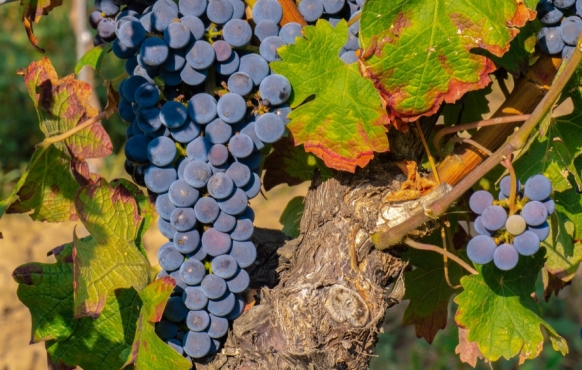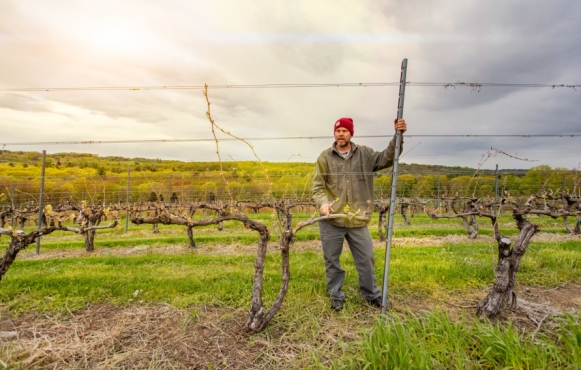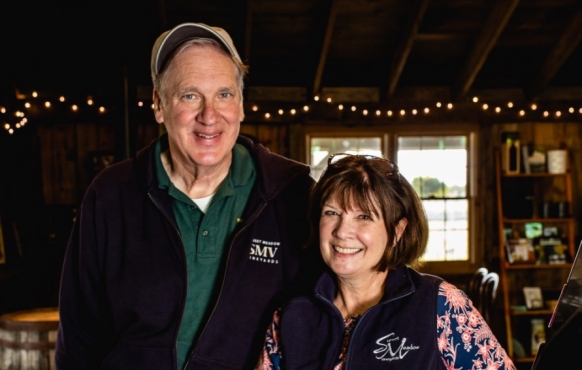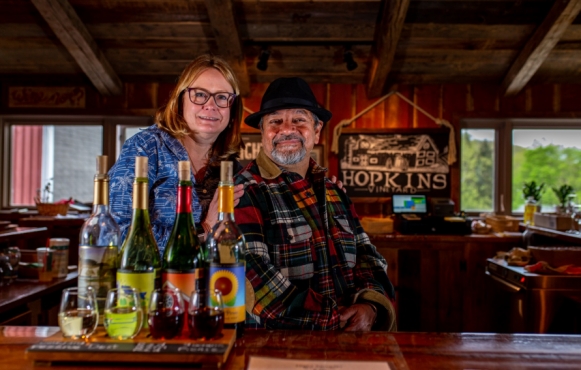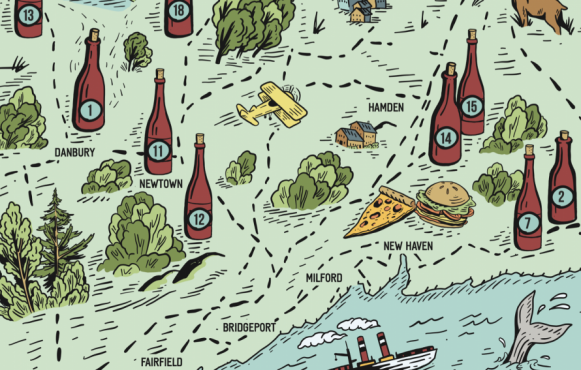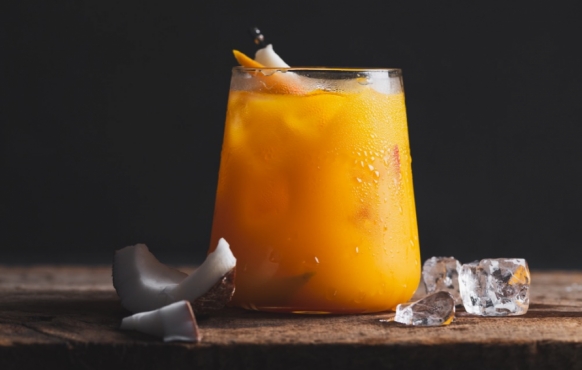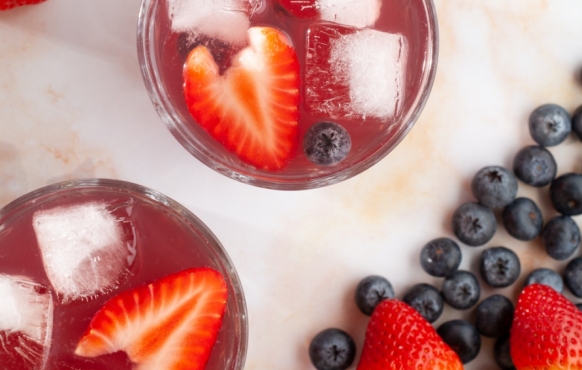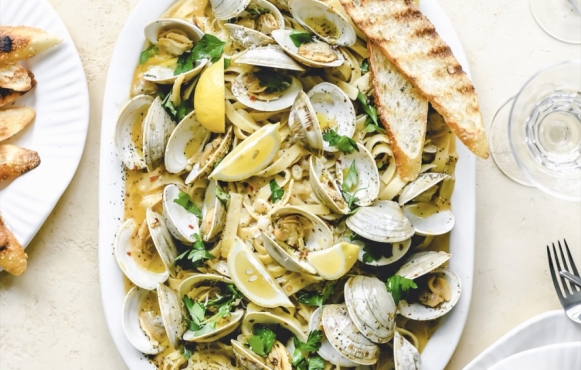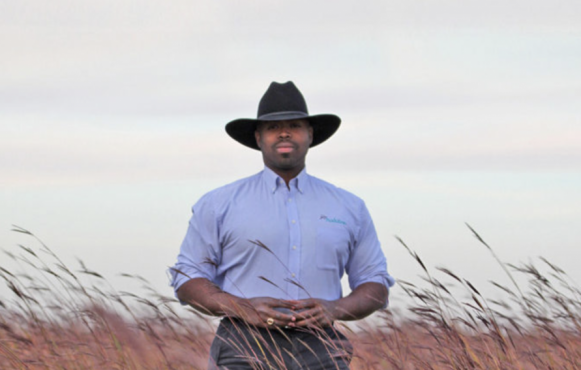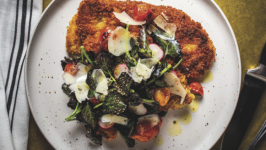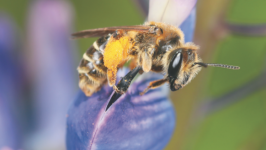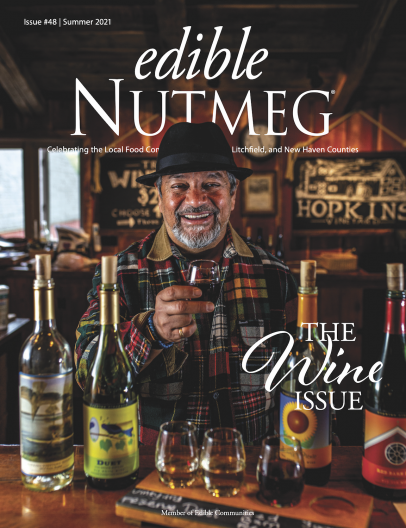
Without a doubt, my favorite part of preparing each issue of edible Nutmeg is the opportunity to learn about the people who populate our state’s food industry and hear the incredible stories that so often lie behind them. This issue, dedicated to our grape growers and winemakers, is full of those stories.
I won’t try to disguise a personal bias: I adore wine. I once elicited a raised eyebrow from a friend when I suggested that wine deserved to be classified as food rather than beverage. Despite that possibly outrageous assertion, I considered myself well-educated about wine, which leaves me mildly embarrassed to admit how much I learned in the course of producing this issue. In addition to being introduced to the long history that wine has in Connecticut, I also learned about the regional specificity that our state’s labeling system uses, a boon to any wine drinker who really wants to know what they’re imbibing.
However, of most interest to me has been learning about the multitude of grape varieties that our farmers grow here, a great many of which were entirely new to me. For many of us, I would wager that our knowledge of basic wine tastes comes down to a mere handful of varietals — Chardonnay, Merlot, Cabernet Sauvignon, Pinot Noir, etc. — and of those, only Chardonnay grapes readily grow in Connecticut’s climate. Yet, our winemakers are regularly growing grapes you may never have heard of, like Cayuga White, Vidal Blanc, St. Croix, and others.
I recently got a chance to sit down and share a glass with Jim Frey, owner and winemaker at Walker Road Vineyards in Woodbury. He’s been in the business for years, having developed much of his taste for wine while living in the U.S. wine-making mecca, California. I also once lived in California, and our discussion inevitably turned to the popular wine varieties from that region that seem to dominate store shelves everywhere. “I think that most people have an emotional reaction to wine that is tied to a specific flavor, like the big taste of a Cab Sauv, and anything that isn’t that flavor is just not going to taste ‘as good’ to them,” Jim told me. “But that experience is dictated by what kind of wine they are exposed to, so if you only ever drink Merlot or Cab Sauv, what kind of wine do you think you’re going to like?” He went on to tell me how years of making wine in Connecticut led him to grow (and drink) a red hybrid, Marquette, that ended up altering his palette; that “big Cab Sauv” that he used to want found itself replaced by “a craving for Marquette, that sometimes comes out of nowhere.”
In discussing the importance of buying and eating locally, wine is somehow overlooked, shielded from the argument by a perception that local wines simply aren’t very good. Its a dismissive contemporary attitude towards wine from our state that I imagine most of us accept simply because we’ve heard it so often, rather than because we have personal experience with and knowledge of Connecticut wines. This summer, I hope you’ll decide about our state’s wines for yourself; that you’ll ask about local wines at your favorite package store; and that you’ll visit some of Connecticut’s many vineyards to enjoy a glass, on-site. They’re produced on beautiful vineyards right here, by your fellow Nutmeggers, and I know they’d love to pour you a glass and tell you the story behind it.
Dana Jackson, Editor & Publisher
Planning a western Connecticut winery visit? Look no further! Click the map, above, for a larger version.
Summer 2021 Digital Edition Flipbook




